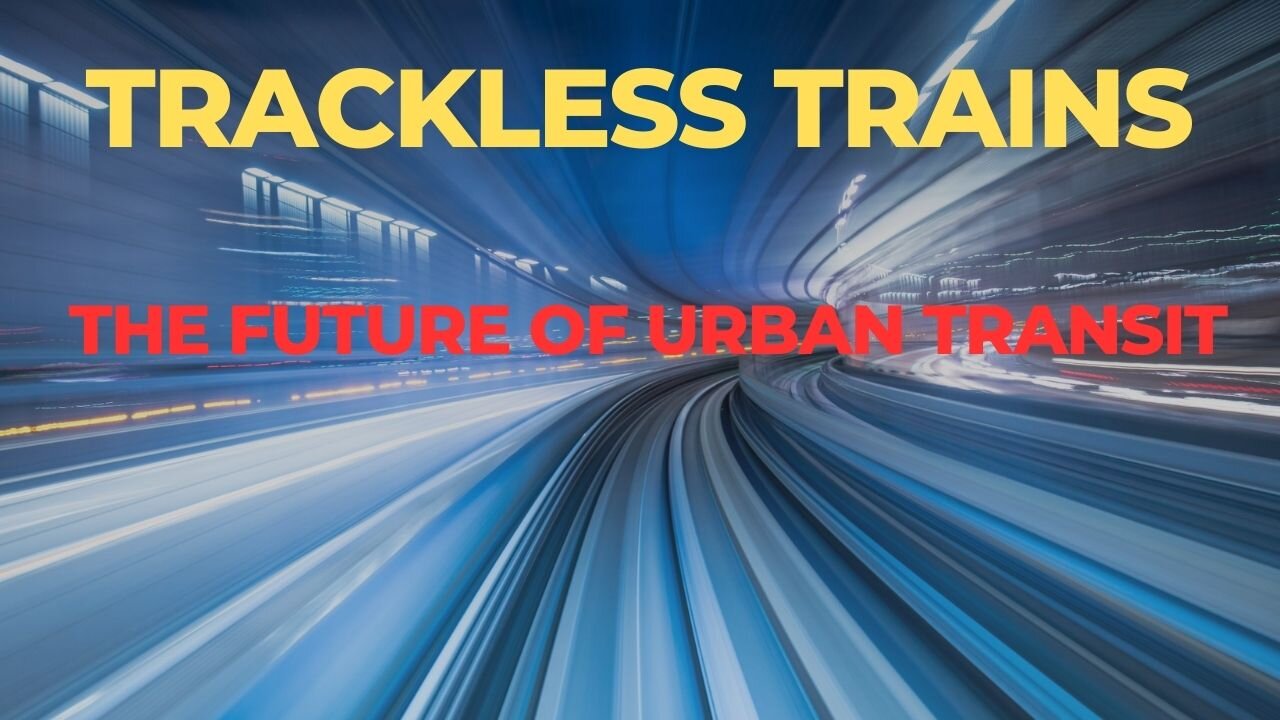Premium Only Content

Trackless trains: The future of urban transit
Like the video with post notifications on if you guys want us to make more of these types of videos.
Future Website:https://fupubco.com
Future Energy Journal: https://fupubco.com/fuen
Future Technology Journal: https://fupubco.com/futech
Headlines: https://fupubheadlines.com
A trackless train, also known as an autonomous rail rapid transit (ART) or trackless tram, operates without the need for traditional railway tracks. Instead, it typically relies on autonomous or driver-controlled technology, often guided by virtual tracks or designated lanes. Here's a general overview of how a trackless train works:
Guidance System:
Virtual Tracks: Trackless trains often use a combination of sensors, cameras, and GPS technology to follow virtual tracks or designated paths on the road. These tracks are not physical rails but rather a predetermined route mapped out by the guidance system.
Lane Detection: Some systems may rely on road markings and lane-detection technology to stay within designated lanes, offering a level of flexibility in existing road infrastructure.
Autonomous or Driver-Controlled:
Autonomous Operation: In autonomous mode, the train operates without a human driver. The guidance system interprets sensor data to make real-time decisions on speed, direction, and stops.
Driver-Controlled: In some systems, there might be an option for a human operator to control the vehicle, especially during initial implementation or for manual override if needed.
Electric Propulsion:
Electric Motors: Trackless trains are often powered by electric motors, either through batteries or overhead lines (similar to electric buses). This makes them more environmentally friendly compared to traditional diesel-powered trains.
Flexible Routing:
Adaptable Routes: Unlike traditional trains bound to fixed tracks, trackless trains can adapt to different routes. This flexibility is advantageous in urban environments where infrastructure changes are expensive or impractical.
Stations and Stops:
Designated Stops: Trackless trains have designated stops along their routes, similar to traditional tram or bus stops.
Passenger Interaction: Passengers typically board and alight at these stops. The train might pause for a predetermined time to allow passengers to embark or disembark.
Communication Systems:
Communication with Control Center: There's often a communication system that allows the trackless train to relay information to a central control center. This enables real-time monitoring, updates, and remote control if necessary.
Safety Features:
Obstacle Detection: The system includes obstacle detection to identify and avoid obstacles, pedestrians, or other vehicles.
Emergency Systems: Safety features such as emergency braking systems and protocols are in place to handle unexpected situations.
Trackless trains are being explored as a more flexible and cost-effective alternative to traditional rail systems, particularly in urban areas where laying tracks might be challenging or expensive. They offer a balance between the fixed routes of traditional rail and the flexibility of buses, providing efficient and sustainable public transportation.
#tracklesstrain #train #technology #cleantransportation #transportation #autonomousdriving #mobility #autonomousmobilerobots #railway #railway #technologynews #sustainability #energynews
-
 LIVE
LIVE
Steven Crowder
1 hour ago🔴Breaking: Minneapolis Catholic Church Shooting Live Coverage
47,764 watching -
 1:01:40
1:01:40
VINCE
2 hours agoThe Democrats' Ticking Time Bomb | Episode 112 - 08/27/25
56.9K29 -
 LIVE
LIVE
LFA TV
4 hours agoLFA TV ALL DAY STREAM - WEDNESDAY 8/27/25
5,539 watching -
 LIVE
LIVE
Major League Fishing
5 days agoLIVE! - Fishing Clash Team Series: Challenge Cup - Day 4
379 watching -
 LIVE
LIVE
GloryJean
1 hour agoAggressive Solo Gameplay on Mouse & Keyboard 🖱️ 6.7 K/D
15 watching -
 LIVE
LIVE
The Pascal Show
30 minutes agoBREAKING! Mass Shooting At Annunciation Church In Minneapolis Multiple Shot
59 watching -
 1:43:04
1:43:04
Dear America
2 hours agoNo More IRS!! Tariffs Bring In Over $500 BILLION! + Taylor Swift Got ENGAGED… This Is A Nightmare!!
75.2K66 -
 LIVE
LIVE
Caleb Hammer
18 hours agoHe Just Sucks… | Financial Audit
63 watching -
 LIVE
LIVE
MYLUNCHBREAK CHANNEL PAGE
1 hour agoThe Population Was ZERO
321 watching -
 LIVE
LIVE
Wendy Bell Radio
6 hours agoTrump Cracks The Barrel
7,612 watching